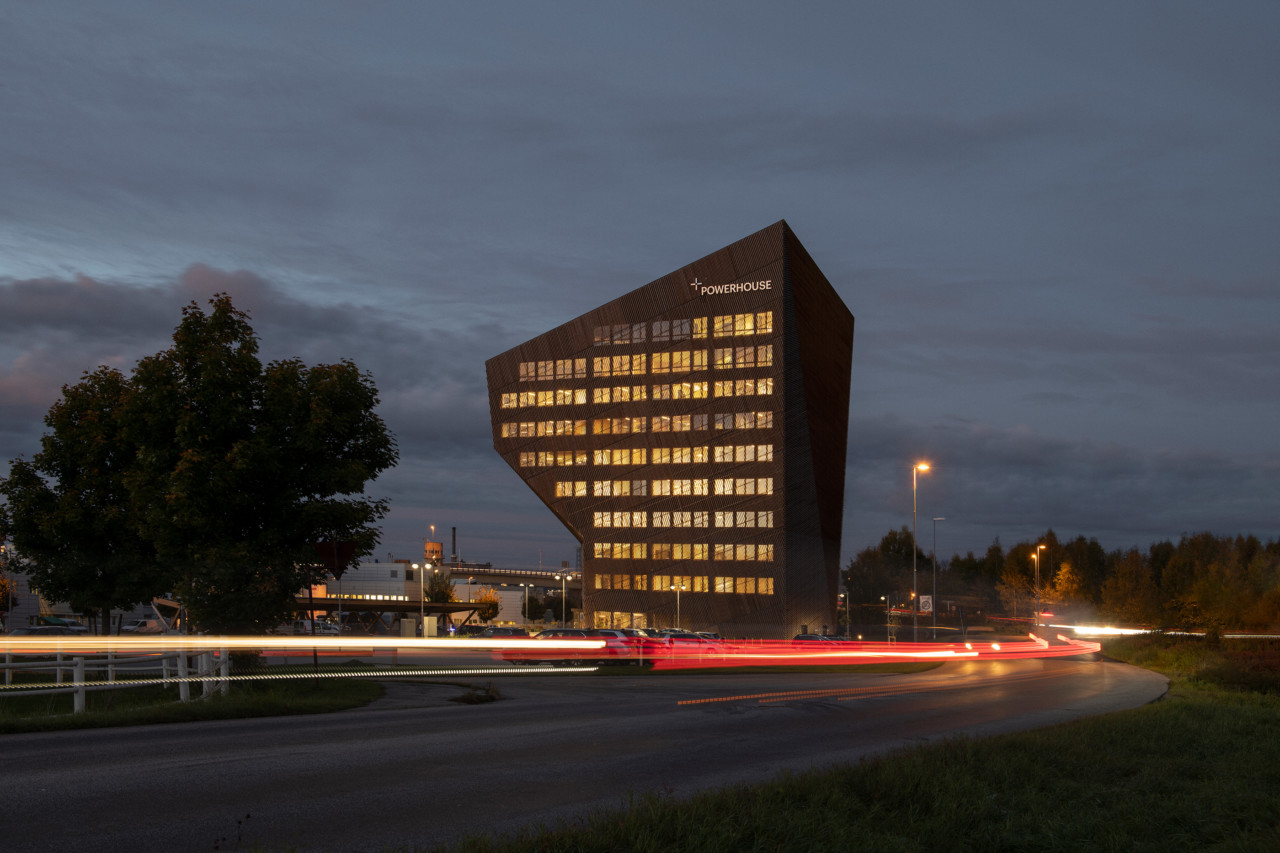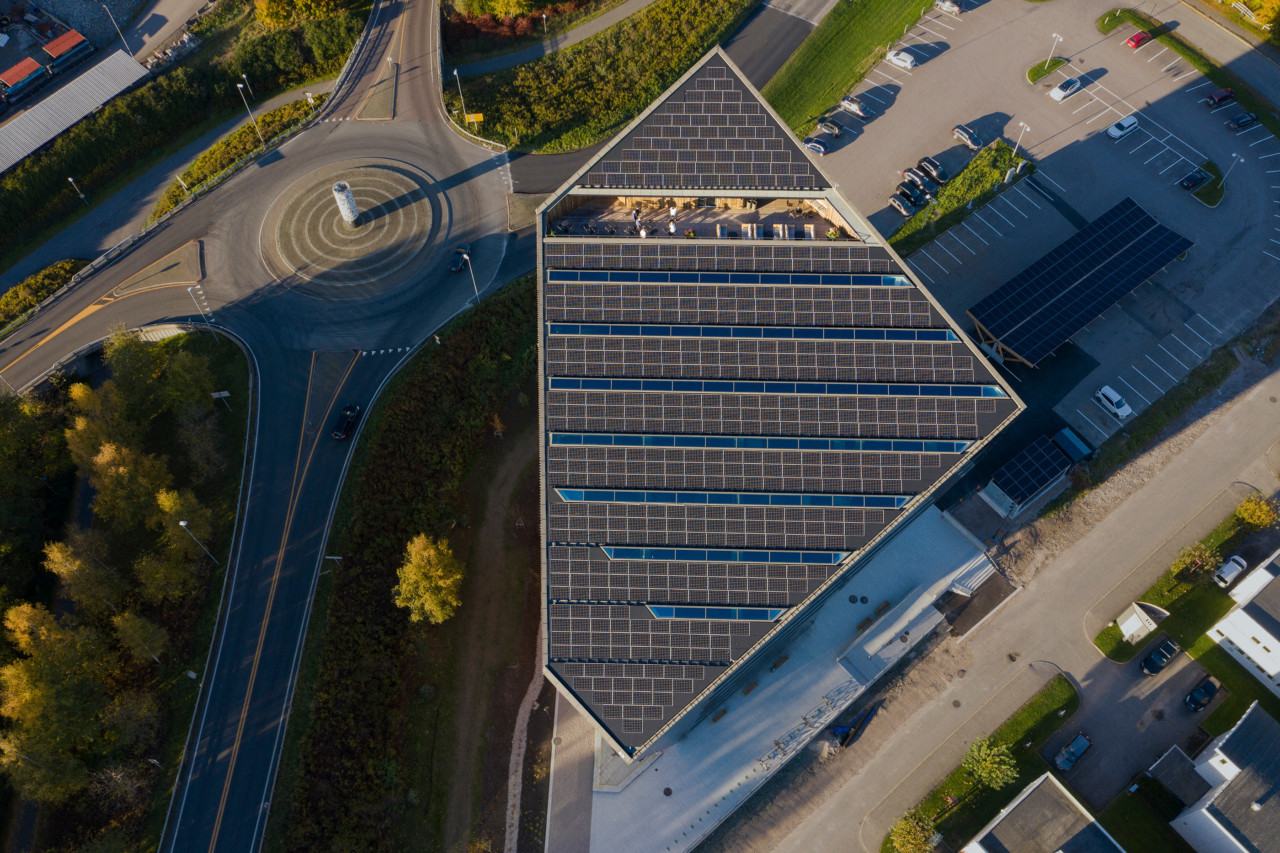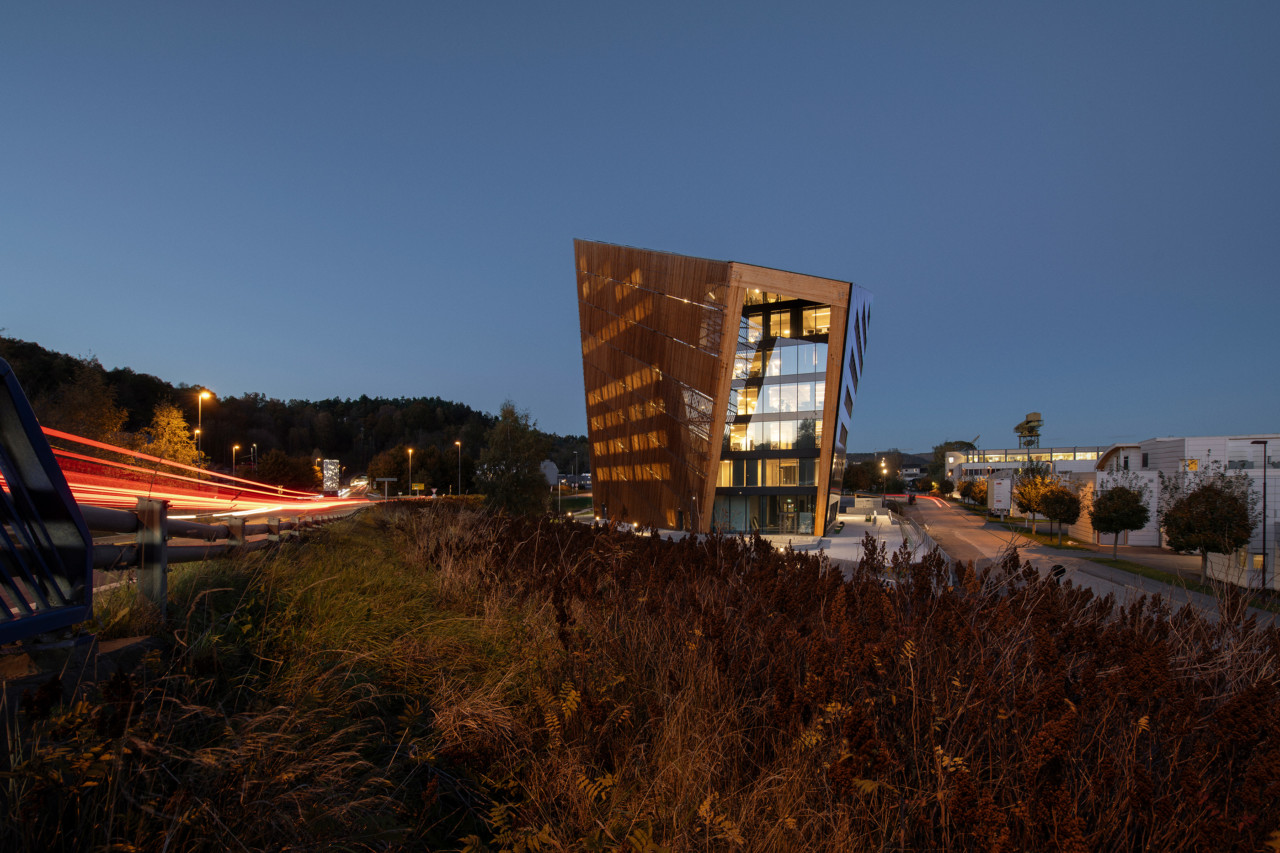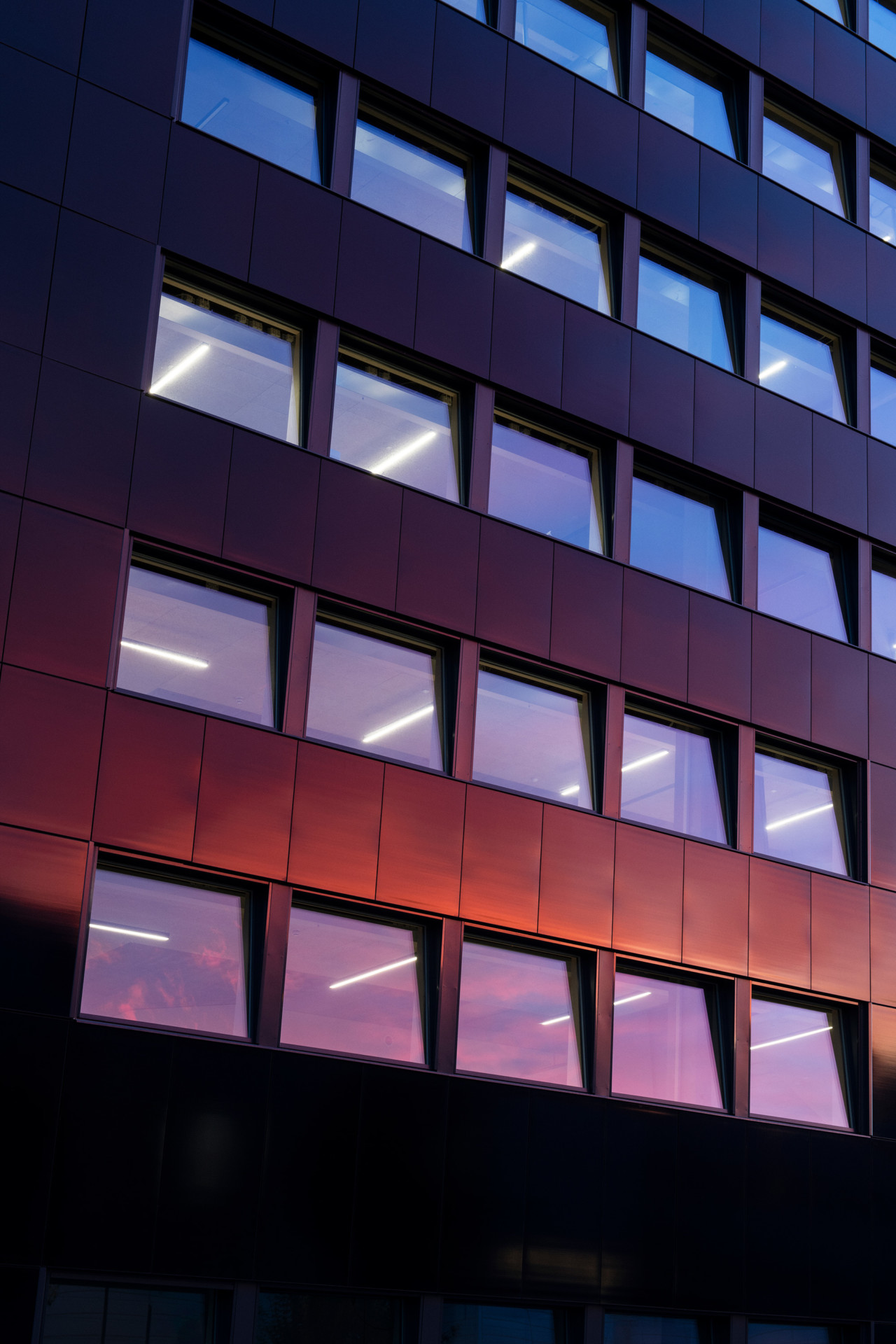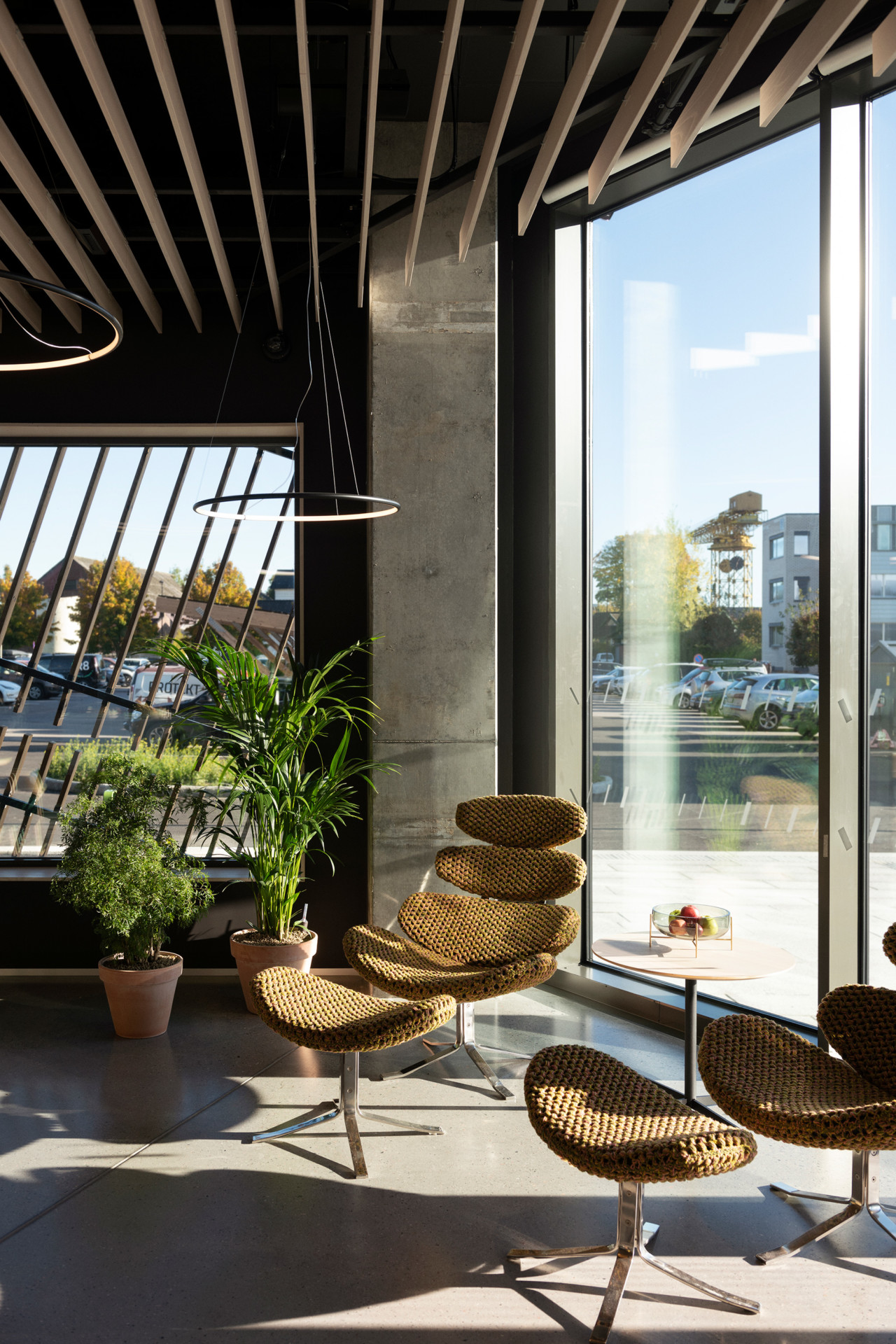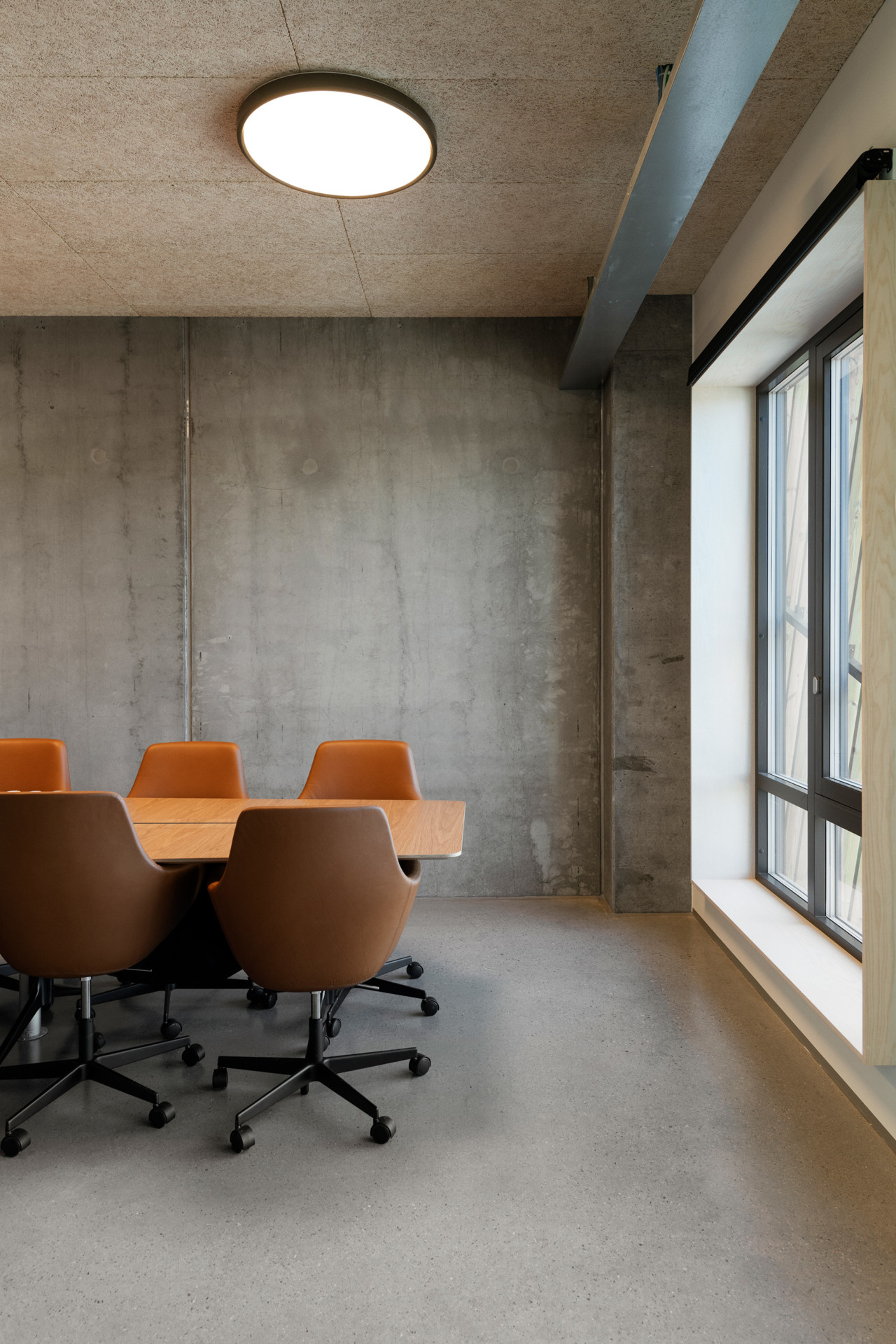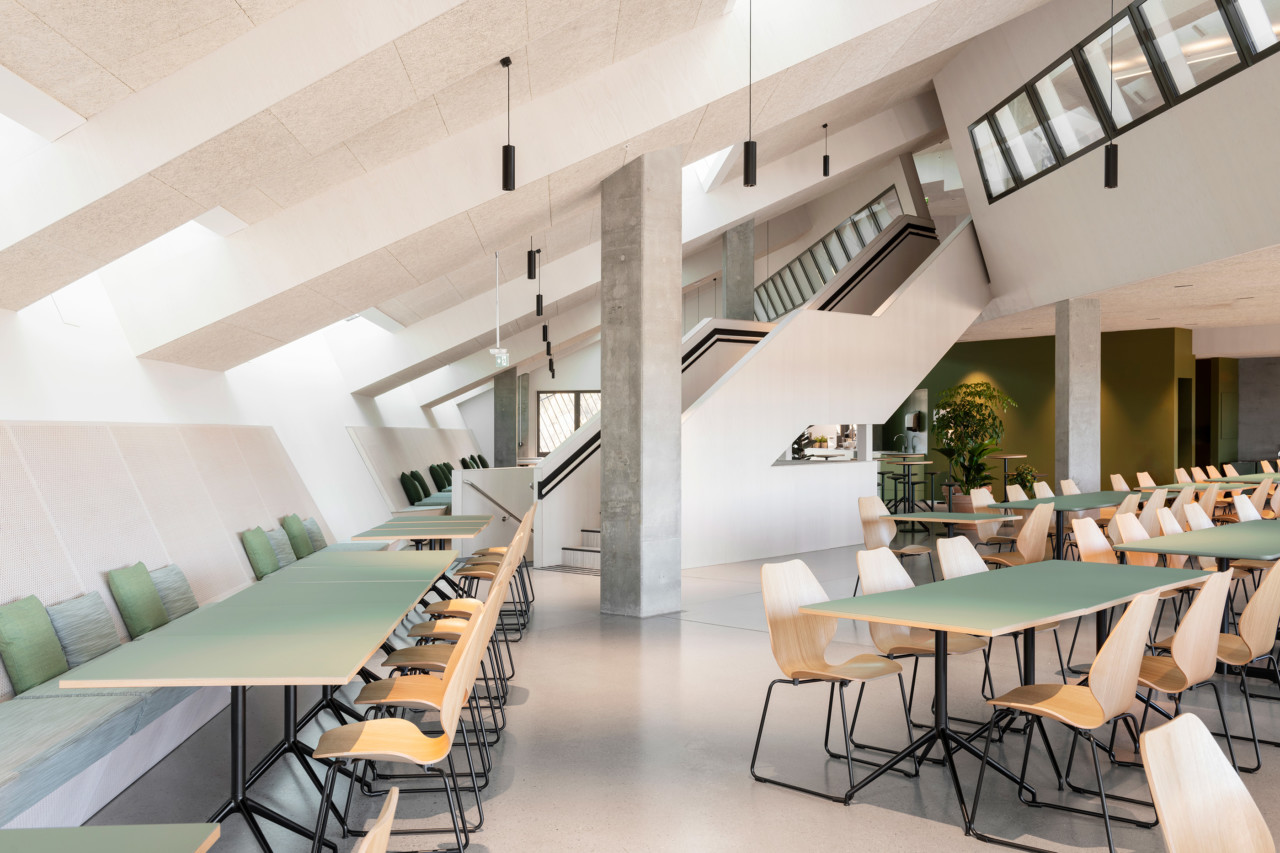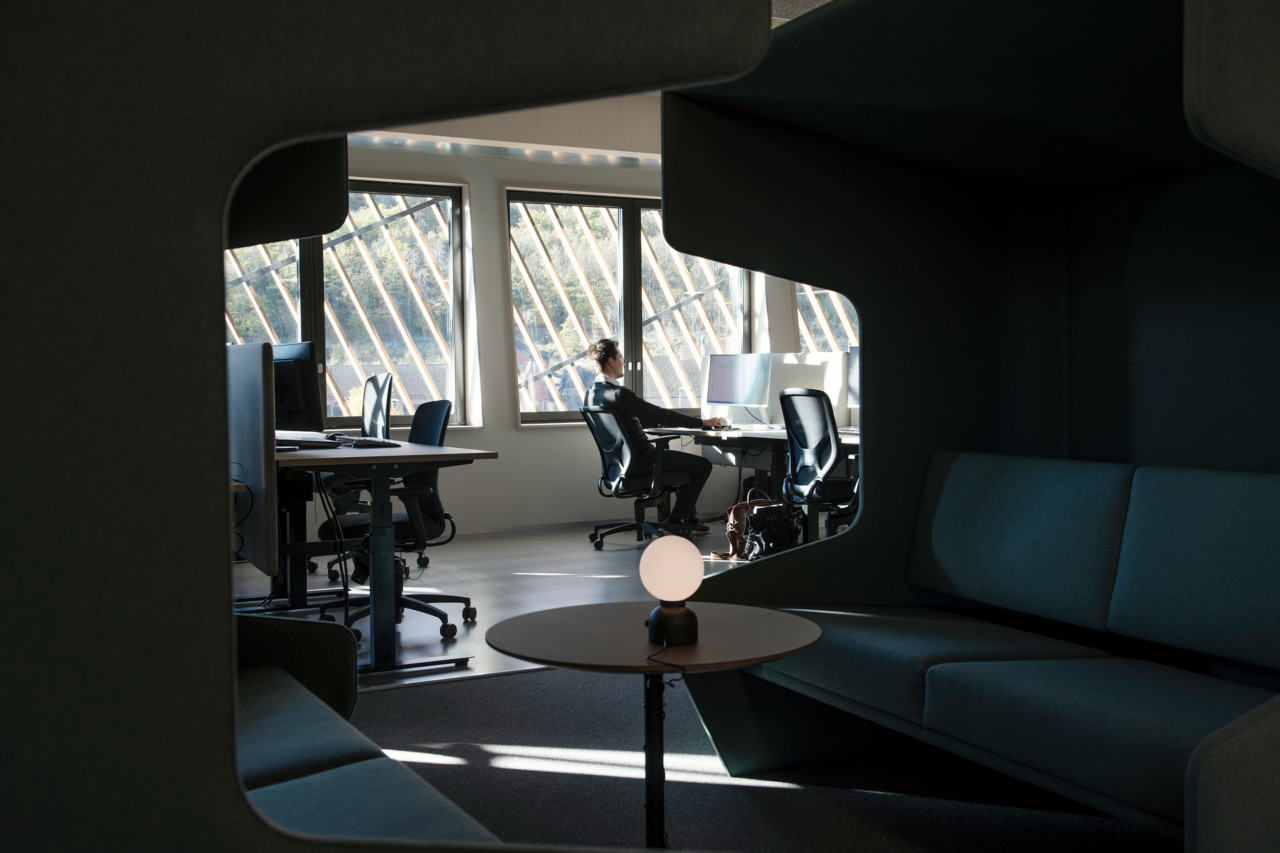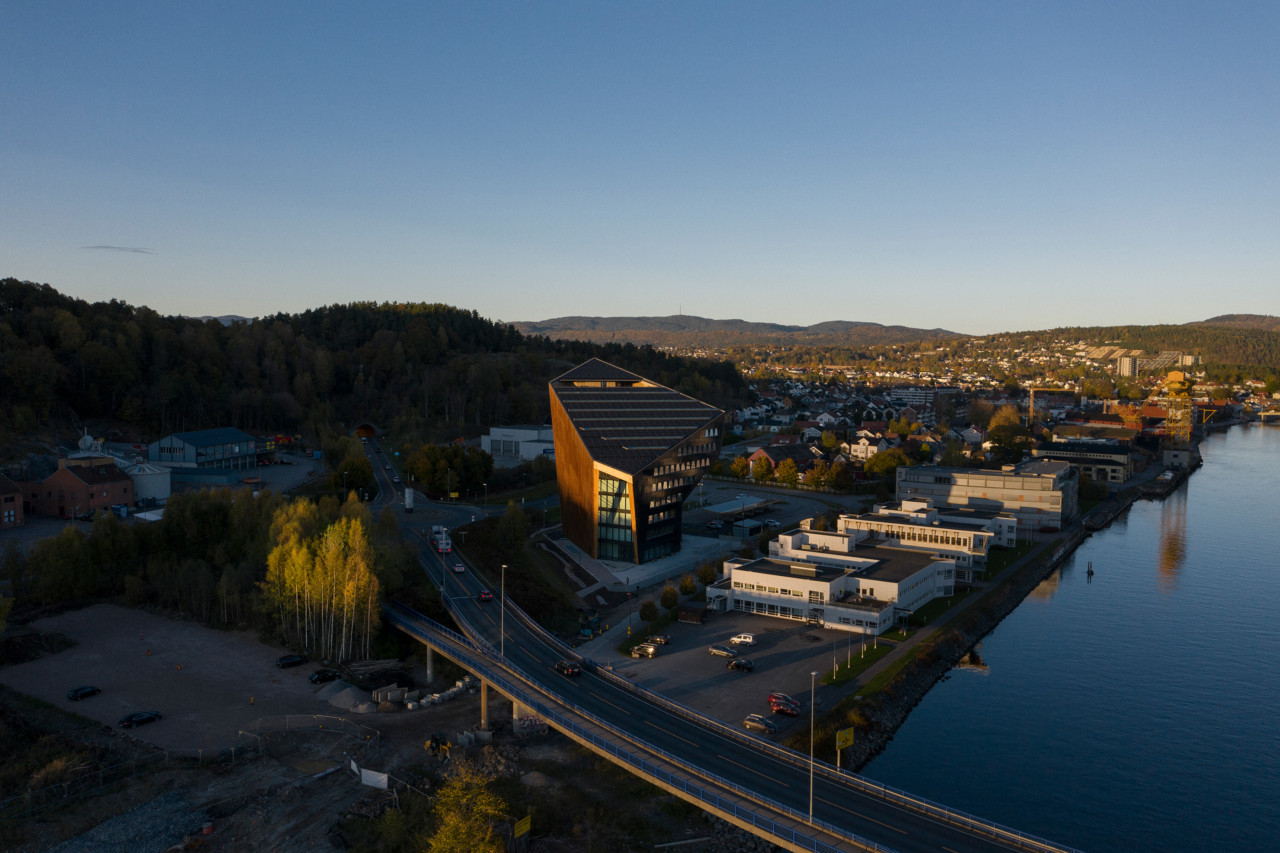In the industrial city of Porsgrunn, Norway, Snøhetta has completed the fourth addition to its Powerhouse initiative, which aims to design the next generation of office buildings: Well–thought–out structures that will generate more power than they take in (over the building’s total lifespan, to be fair).
For Powerhouse Telemark, named for the county Porsgrunn sits in, the 11-story building was optimized in both massing and orientation to both generate solar electricity and cut down on the need for active heating and cooling. The photovoltaic panel roof, split with an accessible terrace, slopes at a 24-degree angle to maximize the amount of incoming sunlight. Electricity generation is bolstered by a solar cell-clade facade on the southern face. Combined with deeply set windows (surrounded with Cembrit fiber-cement panels) and timber brise soleil across the western, northwestern, and northeastern facades, solar gain was kept to a minimum. A water loop runs at the edge of each floor connected to the geothermal wells beneath the building, ensuring the interior is heated or cooled to a stable temperature.
Inside, polished concrete slabs, according to Snøhetta, absorb heat during the day and emit it at night, helping to thermoregulate the building even further while reducing the need for finished flooring products. Locally-sourced—and in the case of the flooring, salvaged—wood was used for the furniture, and the carpet tiles were produced from 70 percent recycled plastic fishing nets.
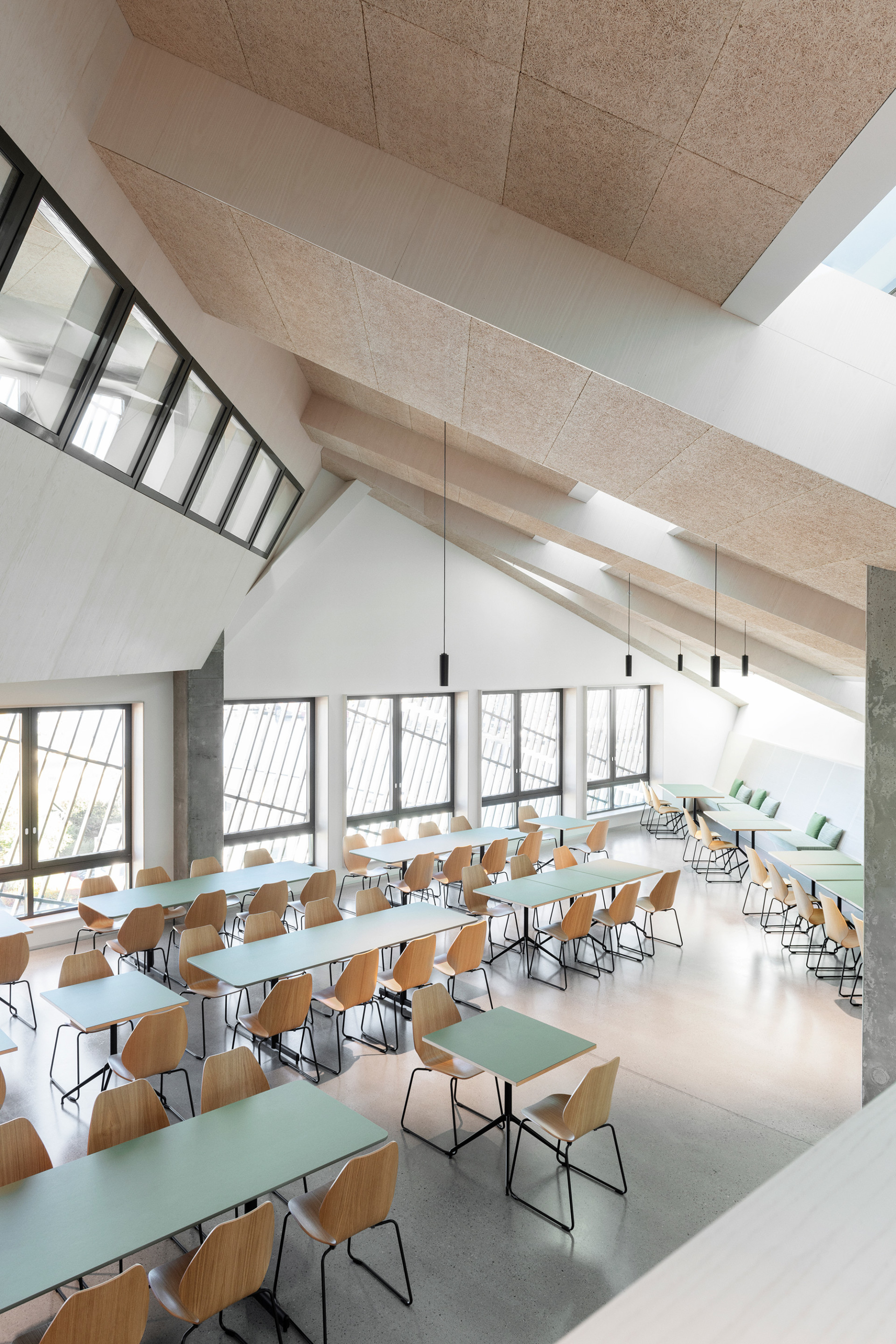
Programmatically, all of the colors, design language, and materiality were kept the same across Powerhouse Telemark, from the two-story coworking space to the normal offices, to the reception area. This was intended for maximum flexibility, as tenants can seamlessly migrate between floors depending on whether they need more or less office space (an important consideration as COVID rates spike across Europe and more employees return to working from home). Further from the building’s facade, smaller meeting areas were broken out and kept away from the windows to keep them cool.
Artificial lighting was kept to a minimum, but strategic cutouts in the roof help natural light penetrate the top three flours. Snøhetta claims that Powerhouse Telemark can generate up to 256,000 kilowatt hours of electricity annually, about enough to power 20 average Norwegian homes for a year, and any excess power will be sold back into the grid.
As mentioned, the Telemark offshoot is the fourth Powerhouse in Norway (although Snøhetta is certainly no stranger to net-zero offices), with the others being in Kjørbo, outside of Oslo; Brattørkaia in Trondheim; and the Drøbak Montessori Secondary School in the city of Drøbak. Powerhouse is an ongoing collaboration between the firm and property management company Entra, global construction heavyweight Skanska, ZERO, and Norwegian consulting firm Asplan Viak.






